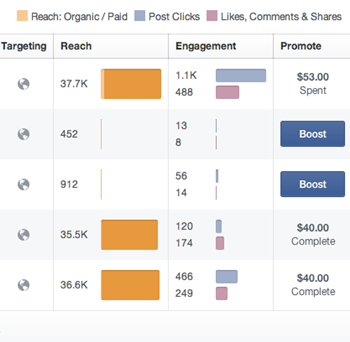For planning your marketing budget of 2018, we’ve put together five tips about marketing spend trends to help you for a better understanding of how to allocate your budget for 2018.
Social Media:
Gone are the days when you can merely post something on social media for free and manage to get a good conversion. Effective free advertising via social media is not effective any more. However, the thing is, paid media like Facebook advertising and boosted posts are highly efficient and very affordable. Below is one example of how much difference it makes in reaching out more people. It creates excellent engagement activities in return.
You should also spend on ad campaigns too to gain even better conversion rate average. Moreover, this is not the only social media for you to get your hands-on. It will change your feelings on paid vs organic social content.
Know what’s trending, parallelly think out of the box:
Determine the best way to reach the target audience. It’s possible that where the crowd is, your target audience is not. Determine the place where your customer snoozes. Also, know the best for them to stay hung. However, don’t just get stuck on one social media, moreover don’t get stuck on just the social media. Go beyond social media marketing and other ‘now traditional’ ways. Start to think about how you can most effectively and efficiently impact customer conversion. Don’t be afraid to be dramatic. What if time and money were not resultant factors?. It doesn’t have to be expensive, but effective. It may not give you a director ready to be executed plan or idea. However, it may grow into something bigger and proper in the coming years.
Know your target, but also their behaviour:
Considering specific target customer in your spending strategy is not an option. It may make your marketing budget go much further. Knowing your best customers inside and out will enable you to do this. For starters, concentrate more on the few with the higher chance of conversion. Budget and spend dollars toward them first. After that sample testing, expand. Learn how to segment and expand probably slowly but steadily.

Comments
Post a Comment